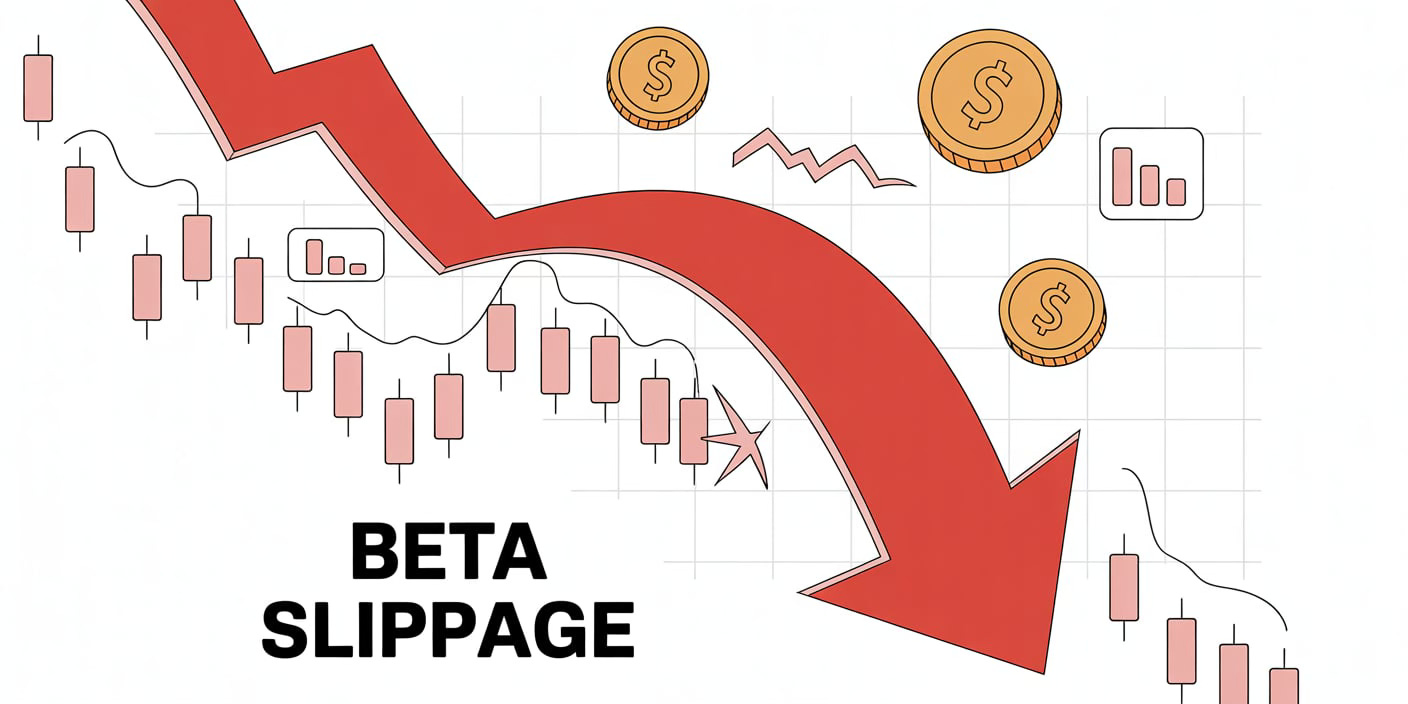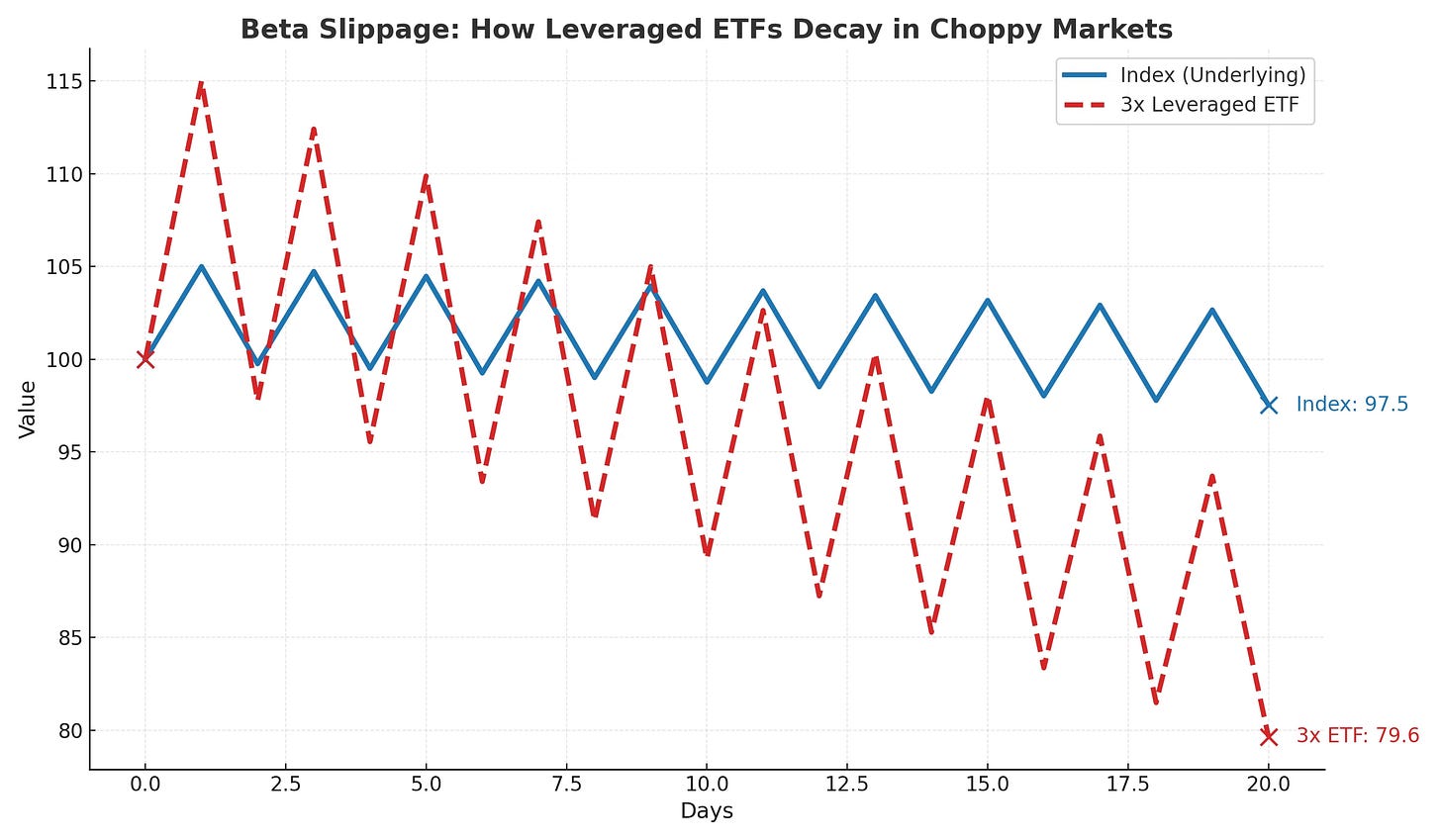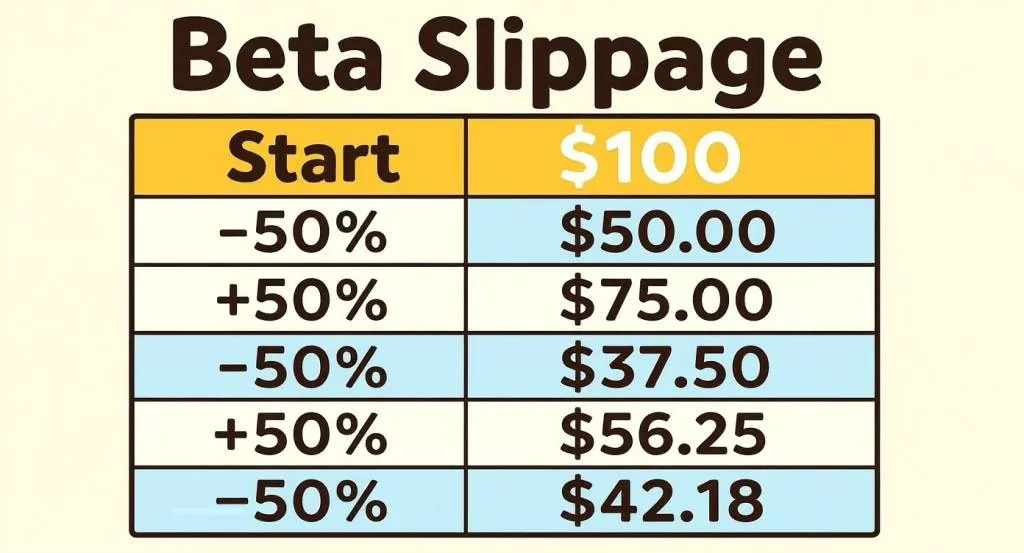Leveraged ETFs and ETNs — like 2x or 3x funds that promise to move two or three times as much as the VIX, S&P 500, Nasdaq, or oil prices — are popular with beginners. On the surface, they sound amazing: if the market goes up 1%, your fund should go up 2% or 3%.
But there’s a catch. Over time, these products often lose value even when the underlying market goes higher. The hidden reason is something called beta slippage.
What Is Beta Slippage?
Beta slippage (sometimes called volatility decay) happens because leveraged products are designed to deliver daily performance multiples, not long-term multiples.
A 2x ETF tries to give you twice today’s return of the index.
A 3x ETF tries to give you three times today’s return.
The key word is today. Over days, weeks, and months, the math of compounding makes the performance drift away from what traders expect.
An Example
Imagine the S&P 500 moves like this over two days:
Day 1: Market goes up 10%.
Day 2: Market goes down 10%.
What happens?
The index starts at 100. After +10%, it’s 110. After –10%, it’s 99. The market is basically flat.
Now look at a 3x ETF:
Day 1: +30% → 100 becomes 130.
Day 2: –30% → 130 becomes 91.
Even though the market is basically flat (99 vs 100), the 3x ETF is down nearly 9%.
That’s beta slippage in action.
Why Does This Cause Decay?
Because leveraged products reset daily, they compound differently in volatile markets:
In trending markets (market goes steadily up or down), leveraged ETFs can perform as expected — sometimes even better.
In choppy markets (lots of up and down moves), the compounding works against you. Each swing eats away at the fund’s value.
This is why many leveraged ETFs slowly grind lower over time, even if the underlying index is flat.
Why Beginners Don’t Know About It
Marketing focus: Leveraged funds advertise “2x” or “3x” exposure, but many investors don’t read the fine print that says it’s a daily multiplier.
Looks safe in the short run: In a one-day or one-week trade, these products often behave as expected. Problems show up in longer holding periods.
Hidden math: The decay isn’t obvious until you run the numbers. Beginners see the headline move, not the compounding effect.
High turnover: Many new traders cycle in and out without understanding why they consistently lose money on these instruments.
How Traders Can Avoid the Trap
Know the product: Leveraged ETFs are short-term trading tools, not long-term investments.
Check volatility: The higher the volatility, the worse beta slippage tends to be.
Don’t “buy and hold”: These funds can decay even if you’re “right” on market direction in the long run.
Use stop-losses and targets: Treat them as tactical tools for quick trades, not core positions.
Key Takeaways
Beta slippage = volatility decay, caused by daily compounding of leveraged products.
Leveraged ETFs deliver multiples of daily returns, not long-term returns.
In choppy markets, these products almost always decay.
Many beginners don’t know this, which is why they lose money even when they think they’re right about market direction.
Final Thoughts
Beta slippage is one of the hidden dangers of trading leveraged instruments. They can be powerful tools for short-term speculation, but over weeks and months they often bleed value — especially in volatile, sideways markets.
For beginners, the lesson is simple: leveraged ETFs are not built to be held long-term. Understanding beta slippage can save you from one of the most common — and costly — mistakes new traders make.





